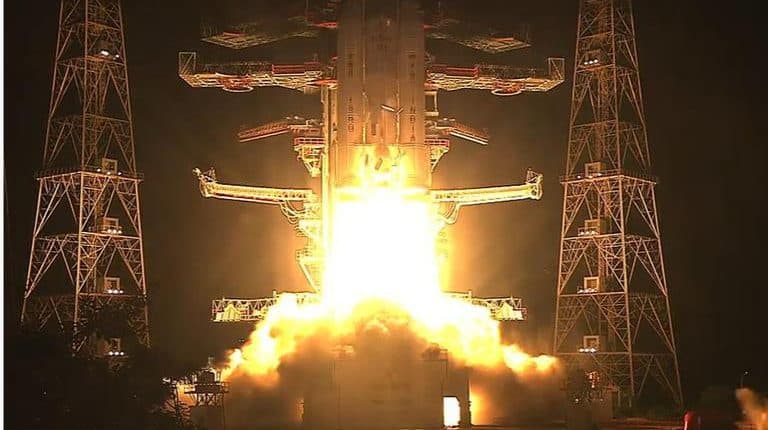Diwali, the Hindu festival of lights is here, and what better way to celebrate it than to light the greatest fireworks of them all? While people across the country celebrate by adoring their finest clothes, illuminating the interior and exterior of their homes with diyas, and partaking in family feasts, ISRO (Indian Space Research Organisation) is celebrating by blasting off a rocket to the skies.
The Launch Vehicle Mark 3 (LVM3), the heaviest rocket of the Indian space agency, took to the earthly skies from the second launch pad of the Satish Dhawan Space Centre, Sriharikota, Andhra Pradesh, at 12.07 AM IST. And it was not alone in its heavenly pursuit – it was carrying a load of 36 broadband satellites to put into low earth orbit (LEO) for OneWeb.
“ISRO’s rocket LVM3 will carry 36 satellites of a private communications firm OneWeb. A 24-hour countdown to the launch has started. Another set of 36 OneWeb satellites will be launched by the LVM3 in the first half of next year, ” Dr. S Somanath, Chairman of ISRO, said, adding, “It’s a historic mission…It has been possible because of PM Modi’s support as he wanted LVM3 to come into the commercial market, with NSIL in the forefront, to operationalize our launch vehicles for exploring and expanding the commercial domain.”
LVM3 M2/OneWeb India-1 mission is completed successfully. All the 36 satellites have been placed into intended orbits. @NSIL_India @OneWeb
— ISRO (@isro) October 22, 2022
This marks the latest launch of OneWeb’s satellites after months of delay – the UK-based satellite company had earlier parted ways with Russian space agency Roscosmos – it had refused to launch further batches of OneWeb satellites unless the company agreed to the state agency’s demands (one of the earliest side effects of the Russian invasion of Ukraine and the numerous sanctions imposed upon it by Western countries).
“OneWeb required six launches which got delayed due to the geo-political situation between Ukraine and Russia. India was very supportive. We brought in two launches on a priority basis by moving some other missions up and down,” said Sunil Bharti Mittal, Chairman, OneWeb.
However, the current mission is memorable for more than the latest launch of OneWeb satellites. Not only is this the maiden commercial mission of the LVM3 – contracted by NewSpace India Ltd (NSIL) – but it also places India and ISRO more firmly on the map of the commercial satellite sector. So far, it has been Western space agencies and companies (Elon Musk’s SpaceX, for one) who have dominated this space. The launch also marks the first time an Indian rocket launched a payload of about six tonnes, and the maiden use of an Indian rocket by OneWeb to launch its satellites for its network of a global broadband internet system.
The 43.5-meter-tall rocket, which is a redesignated version of the Geosynchronous Launch Vehicle (GSLV Mk-III), can carry satellites up to 10 tons. On Sunday, the three-stage launch vehicle achieved liftoff with a payload of about 6 tons. Soon after the launch, the rocket placed the 36 small broadband communication satellites in low earth orbit and completed its fifth successful mission so far.
It remains to be seen whether the same launch vehicle will be used for launching the next payload of OneWeb satellites – a batch of 36 – which is expected to be done in January 2023. Both the current launch – OneWeb’s 14th – and the next one will add to the already placed satellites in Earth’s orbit at an altitude of 1,200 km and complete the constellation of 648 satellites that will deliver high-speed, low-latency connectivity worldwide. So far, 462 OneWeb satellites have been launched, which make up more than 70% of the total constellation.
